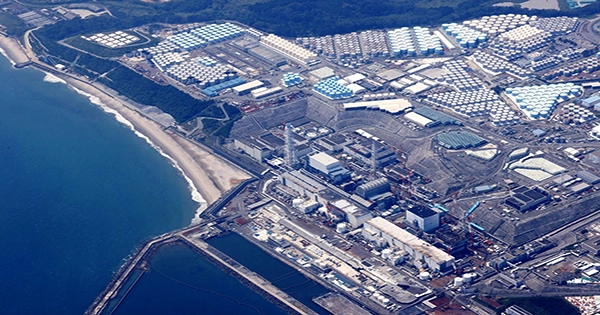A remote-controlled robot descended into the Fukushima power plant’s radioactive waters and recorded photographs of melted nuclear fuel resting along the murky depths of a reactor. Engineers sent down a remotely operated submarine into the bowels of Unit 1 of the Fukushima Daiichi Nuclear Power Station in Japan on February 9 as part of clean-up efforts, according to plant operator Tokyo Electric Power Company Holdings (TEPCO).
On March 11, 2011, the Fukushima nuclear accident occurred. Three reactors at the Fukushima Daiichi nuclear power facility in northeastern Japan suffered catastrophic meltdowns after being slammed by an earthquake and a 15-meter (49-foot) tsunami, in what became the worst nuclear accident since the 1986 Chernobyl disaster.
Nearly 160,000 individuals were evacuated as a result of the hazardous radioactive isotopes sprayed into the surrounding environment, and Japanese authorities established a 30-kilometer (roughly 18-mile) exclusion zone around the power plant. Units 1, 2, and 3 were all functioning at the time of the disaster and had fuel in their reactors.
The newest mission’s goal was to learn more about Unit 1’s primary containment vessel and to locate the tons of melted nuclear fuel debris that remain underwater in highly hazardous seas. The team is currently monitoring the size of the melted debris and evaluating the isotopes being emitted, with the goal of eventually removing this radioactive material. Because the levels of radiation at the depths of the facility are too dangerous for people, robots are deployed to do this work. According to the Associated Press, some of the regions the robot visited picked up radiation levels of two sieverts, which is a lethal amount of ionizing radiation for humans.
The crew used the camera on the robot submarine to place unique guide rings around the building, which will aid in the navigation of future probes. The camera also captured some images of melted nuclear fuel that plummeted to the bottom of the crippled reactor. TEPCO has been tasked with cleaning up and “decommissioning” the power station alongside the International Research Institute for Nuclear Decommissioning (IRID) and Hitachi-GE Nuclear Energy.
While some of the efforts will be focused on removing the physical nuclear debris, they will also have to deal with the highly radioactive fluids that swamped the power plant. The current plan is to dump some of the tainted water into the Pacific Ocean, which has sparked a firestorm of controversy. The entire decommissioning procedure is not likely to be completed for another 30 to 40 years.















